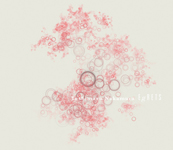|
|
 |
Dusted Reviews
Artist: Toshimaru Nakamura Album: Egrets Label: Samadhi Sound Review date: May. 26, 2010 |

|
|
|
 |
Toshimaru Nakamura came to his current instrument, the no-input mixing board, after a long and increasingly unharmonious relationship with the guitar. Although he bore (and bears — I had a conversation with him a few years ago in which he shared his love for the look of the instruments he had just seen in a Chicago guitar shop) the instrument affection, he was frustrated by continually trying to get it to do something. By cutting the guitar out of his set-up and concentrating on the feedback generated by plugging his mixing board’s output into its input jacks, he found his way into a less domineering, more collaborative, and most importantly egosyntonic relationship with his sound source. So while it’s tempting to celebrate the increased control he’s established over his instrument over time — certainly his work on Egrets or ErstLive 8, his recent duet with Keith Rowe, sounds more intentional and guided — I’m not sure if it’s true. Maybe it’s more accurate to say that he’s gotten better at helping the instrument to have its say.
At any rate, a new methodology separates Egrets from the rest of Nakamura’s discography. His many collaborations may be edited post-hoc, but they’re the product of real time improvisation; his own albums are collections of solo performances. There are four of the latter here, numbers 42-45 in a series that stretches back 10 years, and four other tracks where he plays with either Supersilent trumpeter Arve Henriksen or longtime compadre Tetuzi Akiyama on acoustic guitar. While this may look like a mere hybrid of two familiar approaches, it represents the first time in a career lasting over a decade that Nakamura has not put his human collaborators’ names on the cover. It’s an unparalleled assertion of identity from a man whose music has tended to gesture away from himself and toward his music.
There’s also a difference in affiliation. This is his first release on David Sylvian’s Samadhi Sound imprint. Sylvian has spent the aughts stripping out the glamour and excess of his work on his own and with the groups Japan and Rain Tree Crow, and trying to find ways to reconcile his appreciation for improvised music with his commitment to song forms. Putting out records by people he admires seems to be one way of aesthetically re-situating himself, but it also serves to put people like Derek Bailey, David Toop, Akira Rabelais, and Nakamura before a wider public’s eye.
Nakamura hasn’t done anything so gauche as a disc of techno remixes on Egrets, but he does seem to be willing to put his friendliest face forward. The swells of gorgeously filtered sound that commence opener “Nimb number 42” are unabashedly pretty and quite lulling. Although the next track, “Semi,” disrupts the chill-out vibe, the rare warmth and melodic content of Akiyama’s playing provides easy handholds for a listener to grasp whilst coming to terms with the slivers of feedback and fizzing static that Nakamura delivers. And while Henricksen, who is not one of Nakamura’s regular partners, sticks to breath sounds and valve pops on “Tane,” Nakamura’s windy whistles make sense of them in a way that might make them tolerable to people who have never heard the last few decades of advance in extended trumpet technique. The piece also has a density of action that suggests it is not just improvised, but constructed from either overlaid performances or conventional overdubbing. Again, Nakamura seems to put his intentional self forward in a way that he has not before. He sails even father into commonly navigated water on “Yura.” Looped flickers provide a stable platform from which Hendriksen’s horn (down-pitched until it sounds like a bass clarinet) casts eerie tunes.
Nakamura’s music has never been bereft of drama, but it’s never felt so consciously created as it does on Egrets. The good news is that he comports himself with as much respect for this material as he does in any other setting.
By Bill Meyer
|







